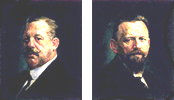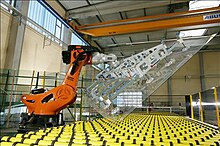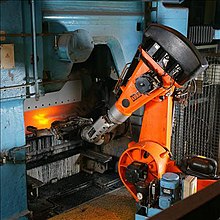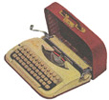| Revision as of 10:50, 9 January 2024 editDineshkumarsen1343 (talk | contribs)31 edits Removed inappropriate external links.Tags: Visual edit Newcomer task Newcomer task: copyedit← Previous edit | Revision as of 00:08, 25 January 2024 edit undoJanos Grotius (talk | contribs)9 editsm Changed copy on 'autonomous welding equipment' sentence. Provided 'citation needed' to their claim of the first large garbage truck.Tags: Visual edit: Switched Newcomer task Newcomer task: copyeditNext edit → | ||
| Line 75: | Line 75: | ||
| ] | ] | ||
| The acetylene factory Augsburg was founded in 1898 in ], Germany, by Johann Josef Keller and Jakob Knappich for the production of low-cost domestic and municipal lighting, household appliances and automobile headlights. |
The acetylene factory Augsburg was founded in 1898 in ], Germany, by Johann Josef Keller and Jakob Knappich for the production of low-cost domestic and municipal lighting, household appliances and automobile headlights. Their production extended into autonomous welding equipment in 1905. | ||
| After the First World War, Keller and Knappich resumed production of safety-, manual- and power-winches and began the manufacturing of large containers. As a result, the Bayerische Kesselwagen GmbH was formed in 1922. The new company was responsible for the development and production of superstructures for municipal vehicles (street cleaning machines, sewage trucks, garbage trucks). In 1927, this business division presented the first large garbage truck{{Citation needed}}. The name KUKA came into being in the same year through the company's name at that time "Keller und Knappich Augsburg". In Hungary, the name - being prominently displayed on the first closed container garbage trucks - eventually became a ], and ultimately a synonym for ].<ref name="index.hu – Mi köze Kukának, a törpének a kukásautóhoz?">{{cite web |title=index.hu – Mi köze Kukának, a törpének a kukásautóhoz? |url=https://index.hu/fortepan/2020/06/20/kuka/ |publisher=© 1999-2020 Index.hu Zrt. |accessdate=2020-07-19 |last1=Tenczer |first1=Gábor |last2=Barakonyi (Képszerkesztő) |first2=Szabolcs |date=2020-06-20 |language=Hungarian}}</ref><ref>{{cite web |url=http://seas.elte.hu/w/!moderntalking/a_metonimikus_szemetlada |title=A metonimikus szemétláda |author=Nádasdy Ádám |date=2003-09-18 |work=Magyar Narancs |accessdate=2022-07-17}}</ref> | |||
| Keller & Knappich GmbH merged with part of Industrie-Werke Karlsruhe AG to become Industrie-Werke Karlsruhe Augsburg Aktiengesellschaft, eventually KUKA (Keller und Knappich Augsburg) for short. | Keller & Knappich GmbH merged with part of Industrie-Werke Karlsruhe AG to become Industrie-Werke Karlsruhe Augsburg Aktiengesellschaft, eventually KUKA (Keller und Knappich Augsburg) for short. | ||
Revision as of 00:08, 25 January 2024
German robot manufacturer This article is about the industrial robot manufacturer. For the U.S. radio station, see KUKA (FM). For other uses, see Kuka.| This article contains promotional content. Please help improve it by removing promotional language and inappropriate external links, and by adding encyclopedic text written from a neutral point of view. (July 2019) (Learn how and when to remove this message) |
| Company type | Subsidiary |
|---|---|
| Industry | Automation |
| Founded | 1898; 127 years ago (1898) |
| Headquarters | Augsburg, Bavaria, Germany |
| Key people | Peter Mohnen (CEO and chairman) |
| Products | Industrial robots, automated production lines |
| Revenue | €3.5 billion (2017) |
| Operating income | €102.7 million (2017) |
| Net income | €47.9 million (2017) |
| Total assets | €2,640.1 million (2017) |
| Total equity | €866.6 million (end 2017) |
| Owner | Midea Group (95%) |
| Number of employees | 14,256 (2017) |
| Divisions | |
| Website | www |
| Company type | GmbH |
|---|---|
| Industry | Machine systems and plant engineering, automation technology |
| Founded | 1996 |
| Founder | Johann Josef Keller and Jakob Knappich |
| Headquarters | Augsburg, Germany |
| Products | Plant engineering, special purpose machine manufacturing, automotive, automation technology, joining technology, engineering, photovoltaic industry, equipment manufacturing, press automation, forming technology, welding technology, control systems |
| Revenue | €1,025.3 million (2012) |
| Number of employees | 3,902 (2012) (worldwide) |
| Parent | KUKA |
| Website | www |
KUKA is a German manufacturer of industrial robots and factory automation systems owned by Chinese appliance manufacturer Midea Group.
The KUKA Robotics Corporation has 25 subsidiaries in the United States, Australia, Canada, Mexico, Brazil, China, Japan, South Korea, Taiwan, India, Russia and in various European countries. The company name, KUKA, is an acronym for Keller und Knappich Augsburg.
KUKA Systems GmbH, a division of KUKA, is a supplier of engineering services and automated manufacturing systems with around 3,900 employees in twelve countries globally. KUKA Systems’ plants/equipments are being used by automotive manufacturers such as BMW, GM, Chrysler, Ford, Volvo, Volkswagen, Daimler AG and Valmet Automotive and by manufacturers from other industrial sectors such as Airbus, Astrium and Siemens. The range includes products and services for task automation in the industrial processing of metallic and non-metallic materials for various industries including automotive, energy, aerospace, rail vehicles, and agricultural machinery.
History

The acetylene factory Augsburg was founded in 1898 in Augsburg, Germany, by Johann Josef Keller and Jakob Knappich for the production of low-cost domestic and municipal lighting, household appliances and automobile headlights. Their production extended into autonomous welding equipment in 1905.
After the First World War, Keller and Knappich resumed production of safety-, manual- and power-winches and began the manufacturing of large containers. As a result, the Bayerische Kesselwagen GmbH was formed in 1922. The new company was responsible for the development and production of superstructures for municipal vehicles (street cleaning machines, sewage trucks, garbage trucks). In 1927, this business division presented the first large garbage truck. The name KUKA came into being in the same year through the company's name at that time "Keller und Knappich Augsburg". In Hungary, the name - being prominently displayed on the first closed container garbage trucks - eventually became a generic trademark, and ultimately a synonym for trash cans.
Keller & Knappich GmbH merged with part of Industrie-Werke Karlsruhe AG to become Industrie-Werke Karlsruhe Augsburg Aktiengesellschaft, eventually KUKA (Keller und Knappich Augsburg) for short.
The development and manufacture of spot welding equipment began in 1936. Three years later, KUKA already had more than 1,000 employees. After the major destruction of the company during the Second World War in 1945, KUKA started manufacturing welding machines and other small appliances again. With new products such as the double-cylinder circular knitting machine and the portable typewriter "Princess", KUKA introduced new industrial fields and gained independence from the supply sector.
In 1956, KUKA manufactured the first automatic welding system for refrigerators and washing machines and supplied the first multi-spot welding line to Volkswagen AG. Ten years later, the first friction welding machine went into production.
In 1967, the arc welding method was applied for the first time at KUKA. In 1971, the delivery of the first robotic welding system for the S-Class took place. A year later, the magnetic arc-welding machine came to the market.
In 1973, KUKA created its own industrial robot FAMULUS. At that time, the company belonged to the Quandt group.
In 1978, beginning with the IR 601/60, robot production went into mass production
In 1980, the Quandt family withdrew and a publicly owned firm was established. In 1981, KUKA's main activities were grouped into three independent companies: the KUKA Schweissanlagen und Roboter GmbH, the KUKA Umwelttechnik GmbH and the KUKA Wehrtechnik GmbH, which was re-sold to Rheinmetall in 1999. Towards the end of 1982, the LSW Maschinenfabrik GmbH, Bremen became a subsidiary of KUKA.
In 1993, the first laser-roof-seam welding systems were manufactured. These welding systems were then further expanded to adhesive bonding and sealing technologies in the following year. Around the same time, KUKA took over the tools & equipment manufacturers Schwarzenberg GmbH and expanded its business to China and the USA in the following years.
In 1995, the company was split into KUKA Robotics Corporation and KUKA Schweißanlagen (now KUKA Systems), now both subsidiaries of KUKA AG. The company is a member of the Robotics Industries Association (RIA), of the International Federation of Robotics (IFR) and the German engineering association VDMA.
In 1996, KUKA Schweissanlagen GmbH became an independent company and, two years later, the leader among European welding equipment manufacturers. The supply of the first pressing tools for automobile side-walls made of high-strength steel began in 2002. The company launched the KUKA RoboScan with remote laser welding head in 2003. Since 2006, KUKA Systems is operating its own body shell factory in Toledo, Ohio, and produces the bodywork for the Jeep Wrangler by Chrysler.
In the course of internationalisation and expansion of business units and technologies such as reshaping, tooling, bonding, sealing, etc., KUKA Schweissanlagen GmbH became KUKA Systems GmbH in 2007. In 2010, KUKA presented a newly developed standardised cell concept for welding machines, KUKA flexibleCUBE.
In the automation sector, KUKA Systems offers standard and customised products for industrial production automation; joining technologies and component handling are amongst their activity. The technologies are tested and the production processes are fully optimised prior to the development. In addition, KUKA Systems offers engineering and individual counselling.
In June 2016, Midea Group offered to buy Kuka for about €4.5 billion ($5 billion). Midea completed the takeover bid in January 2017 by purchasing a 94.55% voting stake in the company.
In late 2017 Kuka announced that 250 employees of KUKA Systems were terminated. The management named trouble with projects as a reason.
Most robots are finished in "KUKA Orange" (the official corporate colour) or black.
Corporate structure
The company is headquartered in Augsburg, Germany. As of December 2014, KUKA employed more than 13,000 workers. While previously emphasising customers in the automotive industry, the company has since expanded to other industries. It has 5 divisions:
- Systems
- Robotics
- Swisslog Logistics Automation
- Swisslog Healthcare
- China
Notable milestones
1971 – Europe's first welding transfer line built for Daimler-Benz.
1973 – The world's first industrial robot with six electromechanically driven axes, known as FAMULUS.
1976 – IR 6/60 – An utterly new robot type with six electromechanically driven axes and an offset wrist.
1989 – A new generation of industrial robots is developed – brushless drive motors for a low maintenance and a higher technical availability.
2004 – The first Cobot KUKA LBR 3 is released. This computer controlled lightweight robot is able to interact directly with humans without safety fences and was the result of a collaboration with the German Aerospace Center institute since 1995.
2007 – KUKA Titan – at the time, the biggest and strongest industrial robot with six axes, entered into the Guinness Book of World Records.
2010 – As the only robot family, the robot series KR QUANTEC completely covers the load range of 90 up to 300 kg with a reach of up to 3100 mm for the first time.
2012 – The new small robot series KR AGILUS is launched.
2014 – With a video released in March, the company gained some recognition with the general public. The video supposedly teased their new robot, specialised in Table Tennis and shows a match against Timo Boll, a German professional. It is however not a real match but a commercial with heavy CGI and the video received strong criticism from the table tennis community. The video has been viewed over 10 million times on YouTube and has won numerous awards.
2016 – KUKA was acquired by the Chinese company Midea Group.
System information and application areas




System information
The KUKA system software is the operating software and the heart of the entire control. In it, all basic functions are stored which are needed for the deployment of the robot system.
Robots come with a control panel(the KCP, or KUKA Control Panel), also known as a teach pendant, that has a display and axis control buttons for A1-A6, as well an integrated 6D mouse, with which the robot can be moved in manual(teaching) mode. The pendant also allows the user to view and modify existing programs, as well as create new ones. To manually control the axes, an enabling switch (also called a dead man's switch) on the back of the pendant must be pressed halfway in for motion to be possible. The connection to the controller is a proprietary video interface and CAN bus for the safety interlock system and button operation.
A rugged computer located in the control cabinet communicates with the robot system via the MFC, which controls the real-time servo drive electronics. Servo position feedback is transmitted to the controller through the so-called DSE-RDW/RDC connection. The DSE board is in the control cabinet, usually located on or integrated into the MFC, the RDW/RDC board in located in the base of the robot.
The software comprises two elements running simultaneously – the user interface and program storage, which is run on Windows 95 for KRC1 and early KRC2 controllers, Windows XP Embedded for KRC2 controllers, and Windows 7 Embedded for KRC4 controllers, as well as VxWin, a KUKA-modified version of the VxWorks real-time OS for program control and motion planning, which communicates to the MFC.
The systems also contain standard PC peripherals, such as a CD-ROM drive(or 3.5" floppy on older controllers), USB ports, as well as a standard interface, either ISA or PCI/PCIe, for adding software and hardware options for industrial automation, such as Profibus, Interbus, DeviceNet and Profinet, and others.
Fields of application
Aerospace
KUKA Systems supplied the TIG welding cell for the upper stage of the Ariane 5 launcher-rocket. TIG welding stands for tungsten inert gas welding and is a special form of arc welding and is one of the core activities of KUKA Systems. The company also provides apparatuses appliances for the construction of aircraft structural elements. Aerospace customers include Boeing, SpaceX, Bell and Airbus.
Automotive
The KUKA Systems portfolio includes the spectrum of production automation of joining and assembling of vehicle body structures: from low-scale automated production facilities to highly flexible manufacturing systems; from production of individual equipments or subassemblies to the assembly of complete body structures and mechanical parts. Equipments for assembling discs and mounting systems for vehicle bodies and chassis (so-called “marriage”) or component installation are also available.
BMW, GM, Chrysler, Ford, Volvo,Hyundai, Volkswagen and Daimler AG are among the customers in this business sector.
Production of rail vehicles
Manufacturers of rail vehicles are also among the customers of KUKA Systems e.g., for the construction of locomotives, subway wagons or in setting up of innovative and highly automated production lines for freight wagons.
Production of photovoltaic modules
KUKA Systems offers solutions for every step of the photovoltaic module production – from brick-sawing to cell handling and cross-tie soldering to framing and packaging of modules.
Welding technology – General
KUKA Systems represents itself in various other industrial sectors as well. A few examples out of many are the production of baby strollers or the production of white goods for BSH (Bosch und Siemens Hausgeräte GmbH).
Awards and certificates


Certificates
- ISO 14001
- ISO 9001
- OHRIS – Occupational Safety Certificate
- VDA 6.4
- ISO 3834
- EN 9100
Application areas
The industrial robots are used in many application areas, such as material handling, loading, and unloading of machines, palletising and depalletising, spot and arc welding. They are used in some large companies, predominantly in the automotive industry, but also in other industries such as the aerospace industry. Specific applications include:
- Transport industry: for the transport of heavy loads, where their load capacity and free positioning are used.
- Food and beverage industry: for tasks such as loading and unloading of packaging machines, cutting meat, stacking and palletising, and quality control.
- Construction industry: e.g., for ensuring an even flow of material.
- Glass industry: used, for instance in the thermal treatment of glass and quartz glass in laboratory glass production, bending and forming operations.
- Foundry and forging industry: the robots' heat and dirt resistance enable them to be used directly before, in and on the casting machines. They can also be used for operations such as deburring, grinding, or drilling, and for quality control.
- Wood industry: for grinding, milling, drilling, sawing, palletising or sorting applications.
- Metal processing: for operations such as drilling, milling, sawing or bending and punching. Industrial robots are used in welding, assembly, loading and unloading processes.
- Stone processing: the ceramic and stone industries use the industrial robots for stone cutting and shaping. KUKA has an exclusive partnership with BACA Systems to develop this technology.
KUKA Entertainment
In 2001, KUKA formed a partnership with RoboCoaster Ltd to develop the world's first passenger-carrying industrial robot. The ride uses roller coaster-style seats attached to robotic arms and provides a roller coaster-like motion sequence through a series of programmable manoeuvres. Riders themselves can also program the motions of their ride. A second generation system, the RoboCoaster G2, was deployed at Universal's Islands of Adventure theme park in Orlando, Florida in 2010, in conjunction with Dynamic Structures. Harry Potter and the Forbidden Journey's seats are mounted on robotic arms, which are in turn mounted on a track allowing the arms to travel through the attraction while performing their movements in synchronisation with the ride's show elements (animated props, projection surfaces, etc.).
KUKA's partnership with RoboCoaster has also seen KUKA robots appear in some Hollywood films. In the James Bond film Die Another Day, in a scene depicting an ice palace in Iceland, NSA agent Jinx, played by Halle Berry, is threatened by laser-wielding robots. In the Ron Howard film The Da Vinci Code, a KUKA robot hands Tom Hanks’ character Robert Langdon a container containing a cryptex.
In 2007, KUKA introduced a simulator, based on the Robocoaster. RoboCoaster Ltd does not market this product. An installation of this version is The Sum Of All Thrills ride at EPCOT in Lake Buena Vista, Florida.
In recent years, KUKA robotic arms can be found on Royal Caribbean cruise liners at their bionic bars. The user selects their desired drink or creates a custom one on a tablet interface. The robotic arms then use an array of spirits, mixers and liqueurs to craft the requested cocktail.
Gallery
-
 1898 Company founded by Johann Josef Keller and Jacob Knappich
1898 Company founded by Johann Josef Keller and Jacob Knappich
-
 1949 an Augsburg Princess
1949 an Augsburg Princess
-
 1920 Success in large container construction
1920 Success in large container construction
-
 1931 Resistance Welding
1931 Resistance Welding
-
 1934 KdF Wagen
1934 KdF Wagen
-
 1955 Large container manufacture
1955 Large container manufacture
-
 1965 German-American tank program at KUKA
1965 German-American tank program at KUKA
-
 1972 Construction of the first Magnet-arc welding machine
1972 Construction of the first Magnet-arc welding machine
-
 1974 Seam welding
1974 Seam welding
See also
References
- "Till Reuter terminates his office as CEO in December in agreement with the supervisory board – Peter Mohnen takes over and ensures continuity". KUKA. Retrieved 24 December 2018.
- ^ "Annual Report 2017". KUKA. Retrieved 15 July 2018.
- "Midea Considers China Relisting for German Robotics Firm Kuka - BNN Bloomberg". 23 November 2021.
- "KUKA in Russia". Retrieved 31 July 2013.
- "KUKA Systems worldwide".
- "KUKA Systems delivers to new Volkswagen plant". Retrieved 23 April 2010.
- Tenczer, Gábor; Barakonyi (Képszerkesztő), Szabolcs (20 June 2020). "index.hu – Mi köze Kukának, a törpének a kukásautóhoz?" (in Hungarian). © 1999-2020 Index.hu Zrt. Retrieved 19 July 2020.
- Nádasdy Ádám (18 September 2003). "A metonimikus szemétláda". Magyar Narancs. Retrieved 17 July 2022.
- Company history located on the KUKA Robotics Homepage
- "History of Industrial Robots" (PDF). Archived from the original (PDF) on 24 December 2012. Retrieved 27 October 2012.
- "Company history located on the KUKA Systems Homepage". Retrieved 21 April 2010.
- "China's Midea receives U.S. green light for Kuka takeover". Reuters. 30 December 2016.
- "Local german newspaper". Retrieved 9 February 2018.
- "Annual Report 2016" (PDF). KUKA. Archived from the original (PDF) on 14 January 2016. Retrieved 28 January 2018.
- "Corporate structure". KUKA AG. Retrieved 31 December 2019.
- "History of the DLR LWR". 17 March 2018.
- Guinness World Records Ltd. (Hrsg.): Guinness World Records 2007. Bibliographic Institute, Mannheim, 2007. ISBN 978-3411140770
- Press Release from 12 May 2015, Retrieved August 6th, 2015
- "China's Midea Has 86% of Robot-Maker in $4.4 Billion Bid". Bloomberg.com. 20 July 2016.
- ^ Multi Function Card
- Resolver Digital Converter
- Digital Servo Electronics
- "VxWin – Windows real-time platform". Retrieved 17 April 2019.
- "Quality around the clock". Archived from the original on 19 July 2011. Retrieved 27 April 2010.
- "Innovative solutions in the stone cutting industry: 100 robots for BACA Systems in North America". KUKA AG. Retrieved 8 September 2021.
- Harry Potter World Orlando (22 March 2010). ""Harry Potter and the Forbidden Journey" Attraction Details". Harry Potter World Orlando. Retrieved 24 January 2014.
{{cite web}}: CS1 maint: numeric names: authors list (link) - Kuka Entertainment. "Kuka Entertainment – Robocoaster". Kuka Entertainment. Archived from the original on 7 August 2010. Retrieved 29 June 2010.
- Kuka Industrial Robots. "Kuka Industrial Robots – Robocoaster". Kuka Industrial Robots. Archived from the original on 30 May 2010. Retrieved 29 June 2010.
- Robocoaster (22 March 2010). "Large & Theme Park Solutions". Robocoaster. Retrieved 29 June 2010.
{{cite web}}: CS1 maint: numeric names: authors list (link) - "KUKA Entertainment 4D Simulator". Retrieved 11 January 2008.
External links
Portal:48°22′12″N 10°56′08″E / 48.37°N 10.93565°E / 48.37; 10.93565
Categories:- Companies based in Bavaria
- Companies based in Augsburg
- Robotics companies of Germany
- Robotics companies of China
- Multinational companies headquartered in China
- Manufacturing companies established in 1898
- Engineering companies of Germany
- Engineering companies of China
- Industrial robotics companies
- Industrial machine manufacturers
- Amusement ride manufacturers
- 1898 establishments in Germany
- 2016 mergers and acquisitions
- Manufacturers of industrial automation
- Quandt family